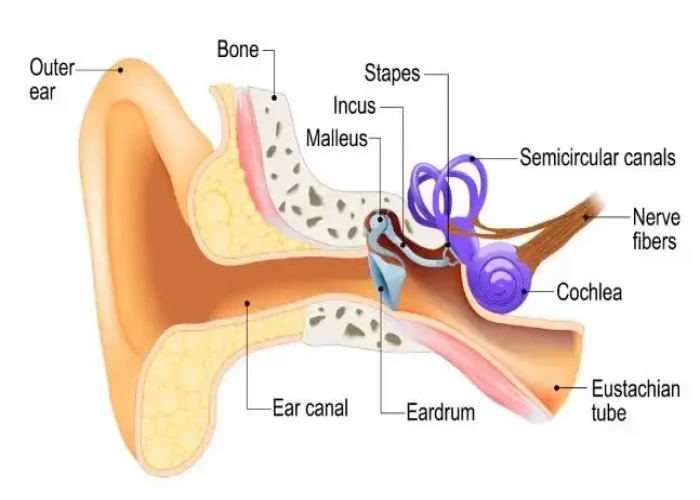 Welcome
Welcome
“May all be happy, may all be healed, may all be at peace and may no one ever suffer."
- A
- B
- C
- D
- E
- F
- G
- H
- I
- J
- K
- L
- M
- N
- O
- P
- Q
- R
- S
- T
- U
- V
- W
- X
- Y
- Z
Cochlea Inner ear - Diseases
The cochlea is a spiral-shaped, fluid-filled structure located in the inner ear. It is responsible for detecting and transmitting sound signals to the brain, allowing us to hear.
The cochlea is lined with hair cells that are sensitive to vibrations caused by sound waves. When sound waves enter the ear, they cause the hair cells to vibrate, which generates an electrical signal that is transmitted to the brain via the auditory nerve. The brain then interprets these signals as sound.
The cochlea is divided into three fluid-filled chambers, which are separated by a thin membrane called the basilar membrane. Different frequencies of sound waves cause different parts of the basilar membrane to vibrate, which in turn activates different hair cells. This allows the brain to distinguish between different frequencies of sound and perceive complex sounds.
Disorders of the cochlea can lead to hearing loss and other auditory problems. Common causes of cochlear damage include exposure to loud noises, certain medications, infections, and genetic factors. Cochlear implants, which are electronic devices that bypass the damaged hair cells and directly stimulate the auditory nerve, can provide a way to restore some hearing in people with severe hearing loss.

Bronchioles and smaller air passages

Diaphragm

Lungs

Nasal cavity

Tendons

Ossicles Middle ear

Esophagus

Bile ducts
Cochlea Inner ear, inner cochlea, কোচলিয়ার মধ্য কান
To be happy, beautiful, healthy, wealthy, hale and long-lived stay with DM3S.